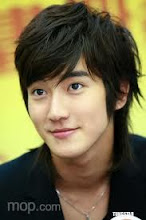Núñez and the stabilisation years (1978–2000)
Beginning with Josep Lluís Núñez in 1978, the president of FC Barcelona has been elected by the club members. This decision was closely tied to Spain's transition to democracy in 1974 and the end of Franco's dictatorship. Núñez's main objective was to develop Barça into a world-class club by giving it stability both on and off the pitch. On recommendation from Cruyff, Núñez inaugurated La Masia as Barcelona's youth academy on 20 October 1979.[37] His presidency was to last for 22 years and it deeply affected the image of Barcelona, as Núñez held to a strict policy regarding wages and discipline, letting players such as Diego Maradona, Romário and Ronaldo go rather than meeting their demands.[38][39]
On 16 May 1979, the club won its first UEFA Cup Winners' Cup by beating Fortuna Düsseldorf 4–3 in Basel in a final that was watched by more than 30,000 travelling blaugrana fans. In June 1982 Maradona was signed for a then-world record fee of £5 million from Boca Juniors.[40] In the following season, under manager Menotti, Barcelona won the Copa del Rey, beating Real Madrid. Maradona's time with Barça was short-lived; he soon left forNapoli. At the start of the 1984–85 season Terry Venables was hired as manager, and he won La Liga with notable displays by German midfielder Bernd Schuster. The next season Venables took the team to their second European Cup final, only to lose on penalties to Steaua Bucureşti during a dramatic evening in Seville.[38]
After the 1986 FIFA World Cup, English top scorer Gary Lineker was signed along with goalkeeper Andoni Zubizarreta, but the team could not achieve success as Schuster was excluded from the team. Venables was fired at the beginning of the 1987–88 season and replaced with Luis Aragonés. The players rebelled against president Núñez in an event that became known as the Hesperia mutiny, and a 1–0 victory at the Copa del Rey final against Real Sociedad finished out the season.[38]
In 1988, Johan Cruyff returned to the club as manager and he assembled the so-called Dream Team. He used a mix of Spanish players like Josep Guardiola,José Mari Bakero, and Txiki Begiristain while signing international stars such as Ronald Koeman, Michael Laudrup, Romário, and Hristo Stoichkov.[41] Under his guidance, Barcelona won four consecutive La Liga titles from 1991 to 1994. They beat Sampdoria in both the 1989 Cup Winners' Cup final and the 1992European Cup final at Wembley. They also won a Copa del Rey in 1990, the European Super Cup in 1992, and three Supercopa de España. With 11 trophies, Cruyff became the club's most successful manager, until being overtaken by Pep Guardiola in 2011.[42] He also became the club's longest consecutive serving manager, serving 8 years.[43] Cruyff's fortune changed in his final two seasons, when he failed to win any trophies and fell out with president Núñez, resulting in his departure.[38]
Cruyff was briefly replaced by Bobby Robson, who took charge of the club for a single season in 1996–97. The club signed Ronaldo and delivered a cup treble, winning the Copa del Rey, Cup Winners Cup, and the Supercopa de España. Despite his success Robson was only ever seen as a short-term solution while the club waited for Louis van Gaal to become available.[44] The club won the UEFA Super Cup against Borussia Dortmund and won a Copa del Rey and La Liga double in 1998. In 1999 the club celebrated its 'centenari', winning the Primera División title. Rivaldo became the fourth Barça player to be awarded European Footballer of the Year. Despite this domestic success, the failure to extend that success to the Champions League led to van Gaal and Núñez resigning in 2000.[44]





Silahkan Tulis Komentar Anda ...